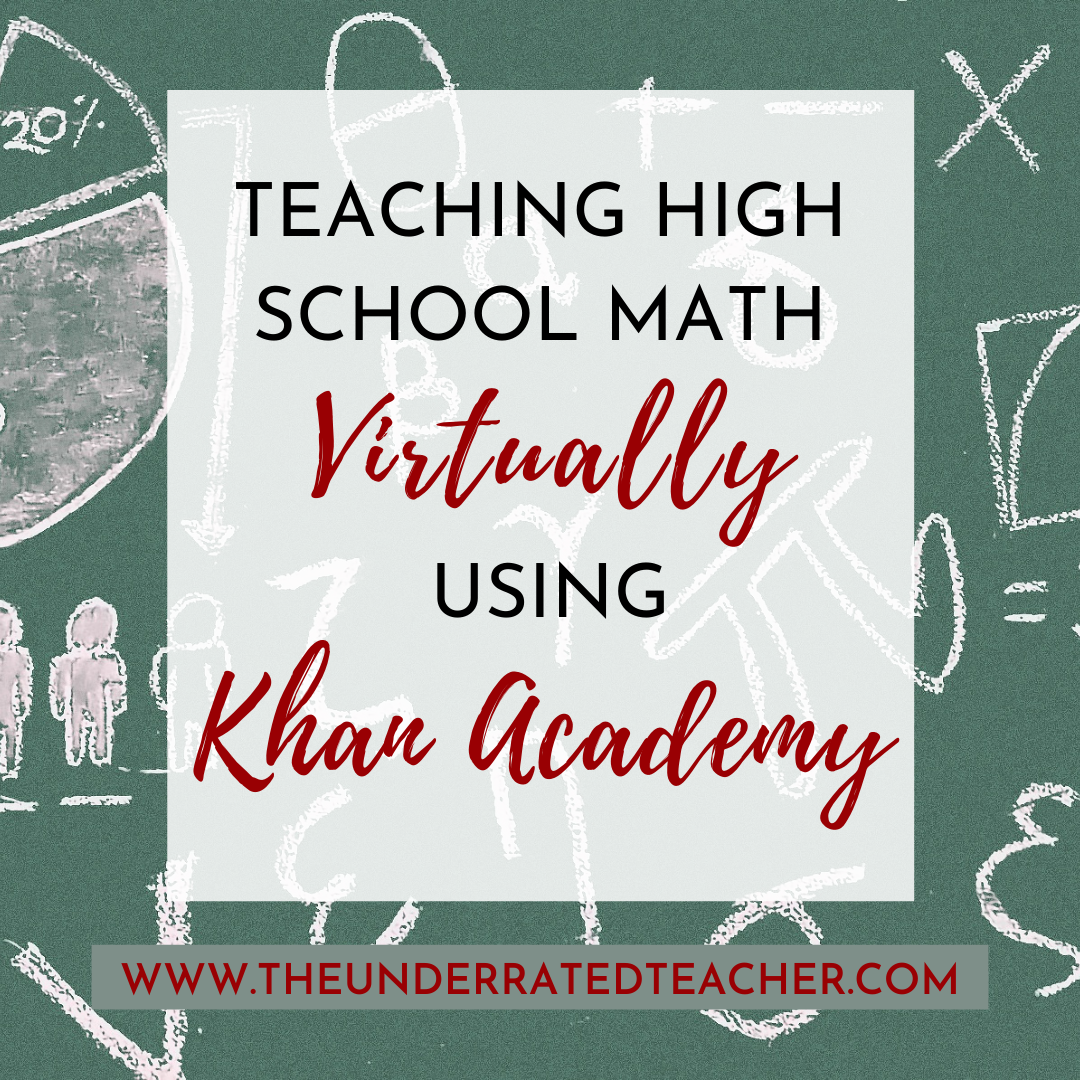
Math is far from the easiest subject to teach from a classroom-based environment. The difficulty multiplies when you’re teaching high school math virtually. It’s not normally delivered through videos and interactive quizzes. It doesn’t involve working in pairs to be creative and develop ideas. Mathematics is structured, factual, and involves working with specific details. It includes learning specific rules which, more often than not, involves a student, a classroom, and a large whiteboard to show workings. That’s just how it is.
It also comes with its difficulties as we know, some concepts are difficult and students all learn at different paces, so what do you do when half your class has the pre-requisite knowledge for the next stage and the other half doesn’t? Carry on regardless? Remediation and repetition? Well, you introduce differentiation where you can, when you can find the time to do it amongst all the other lesson planning, resource creating, and marking that’s already on your to-do list.
Never mind trying to do all this online, jeez, give me a break!
Well, ok I will…well, kind of.
Have You Heard of Khan Academy?
Khan Academy is a non-profit organization in the Education sector that was set up in the earlier years of eLearning to provide online resources and tools for teachers to work with. Founded in 2008 by Sal Khan, this non-profit organization has set out to provide free resources for teachers and students to support their schooling and education, covering a whole host of curriculum areas, but with a focus on mathematics and science.
It’s the leading online educational resource for US teachers and students (according to source, the ConStat US Online Education Customer Survey 2018). So, you can imagine they have seen a substantial spike in interest in their products and resources this year. So much so, that they have created partnerships with the likes of Bank of America, Google, and AT&T to gain the much-needed funds and support to meet the increasing demand.
But Does It Work in Helping Tech High School Math Virtually?
Well, roll back a few years and Khan Academy conducted a state-wide pilot of Khan Academy in Idaho with 173 teachers and 10,500 students during the 2013/14 school year. Students who completed 60% or more of their grade-level math on Khan Academy experienced 1.8 times their expected growth on the mathematics portion of the NWEA MAP Growth Assessment.
Hmm…now that has got my attention. Tell me more, please!
What actually is it?
It’s a combination of content that has been created by former teachers and subject matter experts. Made in partnership with various organizations, it is in line with curriculums and current standards. Most notably, Khan Academy is working with the College Board, the makers of the SAT.
The content is structured into units. Within each unit are multiple lessons including both instructional and practice resources. These include videos, articles, and exercises. Most importantly, they have specific courses aligned to the curriculum. This way, it can work alongside and support your current delivery.
You create a class and allocate work to groups or individuals, allowing you to create personal learning plans for differentiation to stretch the students that need it and support those that need more guidance in a particular area.
It also gives the student instant feedback. On the exercises, students receive a ‘correct, almost correct or incorrect’ reply, and a follow-up help box. This directs students to relevant resources if you need more help or hints and tips. This feedback is also fed into your teacher dashboard. You can see, at a glance, how the class is doing on a particular topic. You can even drill down to the specifics of an individual’s capabilities to see what gaps there may be and the extra support they need.
So how Do I Start Teaching High School Math Virtually Using Khan Academy?
First, you create your teacher account. Then choose the topic that you want to work on. Most select something to support a certain curriculum element. You can then access the videos, articles, exercises, and programs.
Select the resources you think would work best for your students for your virtual learning class and for homework. Next, assign them to the students. You can also assign students specific goals. Each student’s path is tailored to their comprehension. This ensures that all students acquire the necessary knowledge at a pace and level that suits them.
There is still a LOT of uncertainty around the school’s opening and closing, due to the pandemic. There’s no better time to give it a try. If you need to move back to online learning, you have acclimated students on how to use the system in the classroom. Go on, give it a go!
Anything else I should know?
Well, just that they also have free official SAT practice created in partnership with SAT makers the College Board. They hold virtual teaching workshops and webinars. And it’s received high praise from parents in its ability to help them help their kids learn.
Oh, and I think I said this one already. Khan Academy also gives you access to heaps of interactive resources completely free that help you support differentiation, remediation, and SAT preparation. This applies to all learners with resources completely aligned to the US curriculum.


